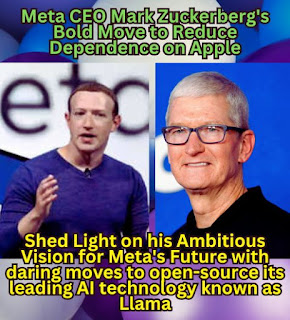The Dawn of Visual Reasoning in AI | A New Era in Machine Intelligence
The Dawn of Visual Reasoning in AI | A New Era in Machine Intelligence
Introduction to Visual Reasoning in AI:
In the rapidly evolving world of artificial intelligence, 2024 is set to be a landmark year, much like the debut of ChatGPT.
This time, the focus shifts from linguistic to visual reasoning, heralding a transformative era where the fusion of sight and cognition in AI will redefine our understanding of intelligence.
From Language to Vision: The Evolution of AI:
The year 2023 saw AI excel in language reasoning, with large language models pushing the boundaries of what machines can comprehend and generate.
However, language alone is insufficient to encapsulate the full breadth of human experience and knowledge.
Human cognition extends beyond words; it involves seeing, feeling, and interacting with the world. To truly advance AI, it must be equipped to process and understand visual data.
The Emergence of Visual World Models:
Visual world models represent the next leap in foundational AI technologies. These models go beyond generating isolated images or text.
They analyze and extract intricate patterns from visual data across space and time, much like humans do.
By interpreting billions of images from social media or satellite data, these models can discover patterns and insights previously unnoticed.
Expanding AI’s Capabilities with Visual Data:
Integrating visual data into AI’s repertoire is not merely an expansion but a gateway to new knowledge.
Vision is fundamental to generating new human insights, akin to how researchers uncover new findings over months or years.
Machines, however, can accelerate this process, efficiently extracting and analyzing data to reveal actionable insights.
Unlocking the Potential of Hidden Data:
A significant aspect of this advancement is harnessing the vast, untapped reserves of visual data from various sources, including YouTube, government databases, and insurance records.
This "hidden data" has immense potential for pretraining powerful AI models. Through innovative training and inference methods, AI can transform this data into valuable information.
Enhancing Human Cognition with AI:
The integration of visual reasoning in AI aims to augment human cognition, not replace it. By automating data analysis, AI allows humans to focus on creative, strategic, and ethical problem-solving.
This collaboration between human and machine intelligence promises unprecedented innovation and discovery.
Ensuring Ethical and Effective AI Use:
The transition to visually empowered AI also necessitates careful consideration of ethical and societal impacts. Just as large language models required fine-tuning, visual world models will need alignment to ensure their productive use.
This involves rigorous testing and clearly defined use cases to prevent misuse and maximize benefits.
Collaborative Approach to AI Development:
As we embark on this new era, a collaborative approach is crucial. AI researchers, ethicists, policymakers, and stakeholders must work together, focusing on experimentation and impact assessment.
This collective effort will help navigate the complexities and challenges of visually intelligent AI.
Conclusion:
The shift from linguistic to visual reasoning in AI marks a significant milestone in the quest for advanced machine intelligence.
By integrating visual data, AI can unlock new dimensions of knowledge and innovation, augmenting human capabilities.
As we move forward, thoughtful and collaborative efforts will be essential to harness the full potential of this groundbreaking technology.
Content Source Courtesy :
https://www.forbes.com
https://www.popularmechanics.com
%20(4).jpg)
%20(1).jpg)
.jpg)

Comments
Post a Comment